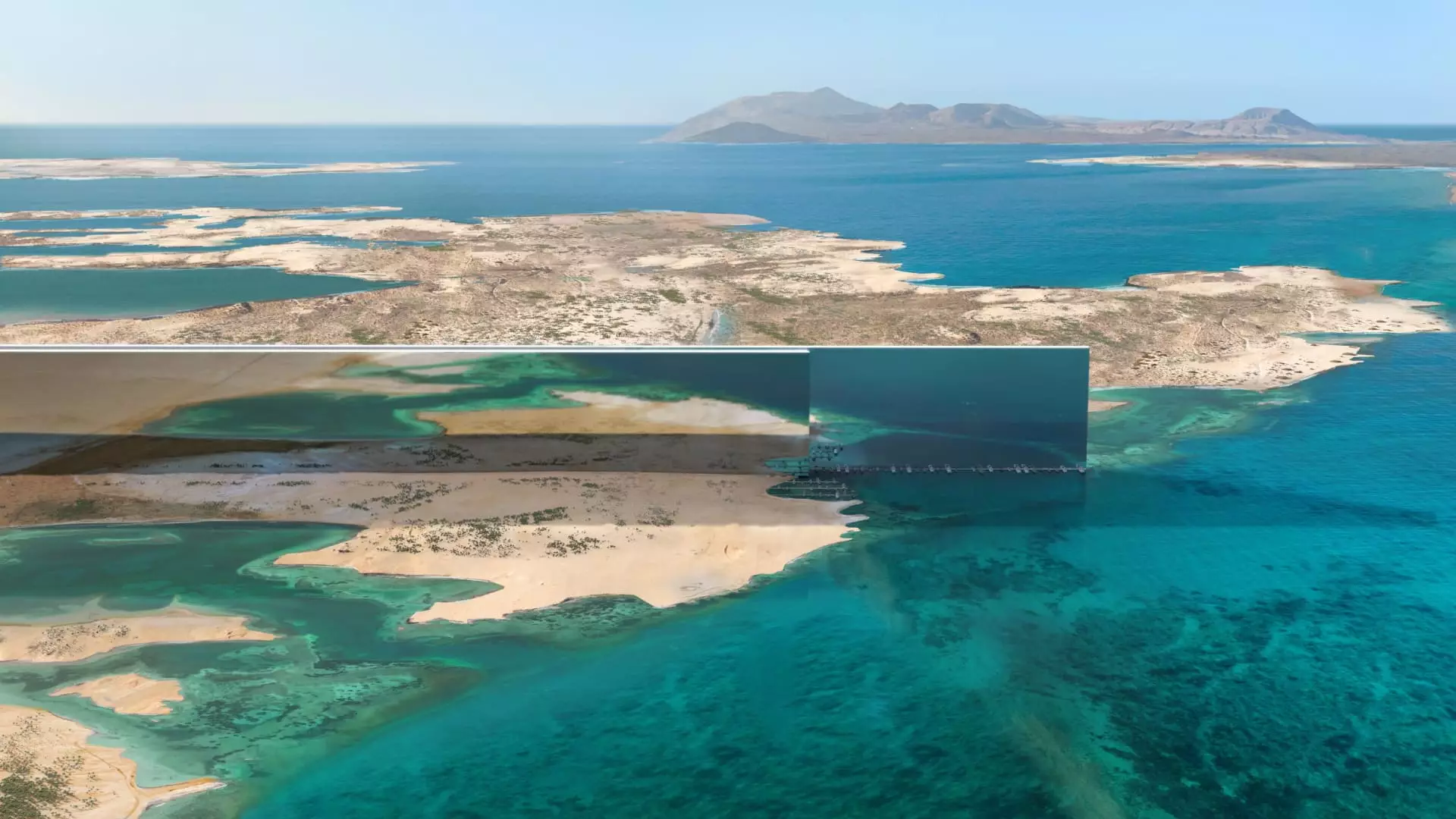Saudi Arabia’s ambitious Neom project, particularly the iconic visionary city known as The Line, epitomizes the allure of technological utopianism—a sprawling attempt to reinvent urban living through high-tech grandeur. For years, the kingdom has portrayed these developments as the future’s blueprint, a symbolic manifestation of its desire to escape oil-dependency and become a global innovation hub. Yet, beneath the glittering facade lies a troubling disconnect from economic realities and technological limitations. The recent reassessment by the Saudi sovereign wealth fund signals a crucial acknowledgment: these grand visions might be nothing more than overhyped aspirations that scramble to adapt to a rapidly shifting global landscape.
Such reassessment reveals a critical flaw in the project’s conception—a persistent overconfidence anchored more in political optics than practical feasibility. The idea of a 105-mile linear city, nestled between two tallest skyscrapers and powered by cutting-edge high-speed rail, sounds thrilling on paper, but it risks becoming an elaborate mirage. The global peer review and strategic audit suggest that the dream is now hanging precariously on the edge of financial and technological viability. Is it possible that the technology does not yet exist to make The Line a feasible reality? Are the projected costs realistic, or are they a product of overly optimistic forecasts designed to impress rather than inform? As oil prices dip and economic pressures mount, the veneer of innovation starts to crack under the weight of sober economic scrutiny.
The Cost Conundrum and Political Ambitions
Neom’s staggering initial budget—estimated as high as $1.5 trillion—raises serious questions about the sustainability of such an audacious business plan. With Saudi Arabia’s fiscal reserves under strain from a combination of lower oil revenues and rising geopolitical costs, the kingdom’s ability to finance what amounts to an economic leap of faith is no longer a given. The government’s push for diversification through Vision 2030 is laudable in intent but increasingly hamstrung by the actual fiscal constraints now becoming palpable. The lavish spending that caricatured Saudi ambitions a few years ago now seems less daring and more reckless.
This transition from unbridled optimism to cautious recalibration reflects a country grappling with the reality of limited resources and the need for responsible oversight. The decision to reevaluate The Line, involving consultancies and strategic reviews, isn’t just about technical feasibility—it’s an admission that the project’s foundational assumptions might have been overly ambitious or even naive. In a sense, Saudi Arabia’s leadership is forced to confront the stark reality that historic overinvestment combined with falling oil prices demands a radical rethink. It’s a sobering reminder that even the most grandiose megaprojects, driven by political will rather than economic prudence, are vulnerable to the harsh laws of market discipline.
Trust, Transparency, and the Future of Mega-Projects
The criticisms surrounding the project’s management—particularly the perception of a “yes-man” culture among consultants—highlight a deeper problem of trust and accountability. When project forecasts are driven by optimistic projections aimed at pleasing stakeholders rather than grounded in reality, the entire enterprise becomes susceptible to failure. The trust placed in predicting technological feasibility and economic prospects ought to be scrutinized more rigorously, especially for mega-projects of this scale.
Renowned industry voices point out that The Line was initially a symbol of innovation and boldness, yet its execution now appears to be mired in overly optimistic planning and underwhelming results. This scenario isn’t unique in the world of large infrastructure; history is full of projects that soared on hype only to fall short when faced with the brutal realities of engineering, markets, and funding. To prevent The Line from becoming just another spectacular flop, Saudi Arabia needs more transparency, more accountability, and a grown-up approach aligned with market realities.
The planned job cuts and cost-reduction steps signal a painful but necessary correction—an acknowledgment that the project’s future requires a more sustainable, scalable approach. If the kingdom wants to transform these grand visions into real economic gains and societal benefits, it must shed the illusion that big dreams alone can replace a solid, market-driven strategy. Trust is earned through responsible governance, not through dazzling headlines. Whether Neom survives as a scaled-down version or morphs into a different entity entirely, its fate hinges on a fundamental shift in mentality: from reckless ambition to pragmatic innovation.
The Real Challenge: Reconciliation of Vision and Reality
The central challenge for Saudi Arabia’s mega-projects today is reconciling visionary political ambitions with the unforgiving constraints of economics and technology. There’s an inherent danger in clinging to the hope that the latest tech trend or architectural marvel can somehow compensate for a lack of proven feasibility. As oil revenues decline, it becomes less sustainable to assume that future growth will automatically fund these masterpieces. Instead, the kingdom must accept that reshaping its economic landscape requires humility and measured progress, not reckless overreach.
The reassessment of The Line signals that Saudi Arabia is finally waking up to the reality that high ideals require high standards of accountability. It’s a necessary, albeit painful, step toward ensuring that the country’s future development is built on more reliable foundations. In the end, the kingdom’s success will depend less on spectacle and more on sound economic strategies, transparent governance, and a willingness to scale back ambitions when circumstances demand it. Only then can the vision of a modern, diversified Saudi Arabia become a sustainable reality—not just a glossy headline.

